Apple variety Persianka
Persian is a winter apple variety. Created by breeders - L.A. Kotov and Dibrova P.A. - at the Sverdlovsk OSS by combining the genetic material of the Peach and Kungur pineapple varieties. The variety was named "Persianka" as the daughter of the Peach variety. The Persian apple tree entered the state test in 1990. It is zoned in the Ural and Volga-Vyatka regions. It has become widespread in other areas of the Urals as a new promising variety. Recommended for extensive production tests in the Orenburg region and for amateur gardening.
The tree is of medium growth, reaches 3 - 4 m in height.At a young age, the crown has an oval shape, but over the years it becomes spherical, with a diameter of up to 2.5 m.The branches of the apple tree are thick, depart from the trunk at an acute angle, which requires additional supports for preventing them from breaking off under the weight of the crop or snow. There are relatively few branches, as a result of which the crown is sparse. Average leafiness.
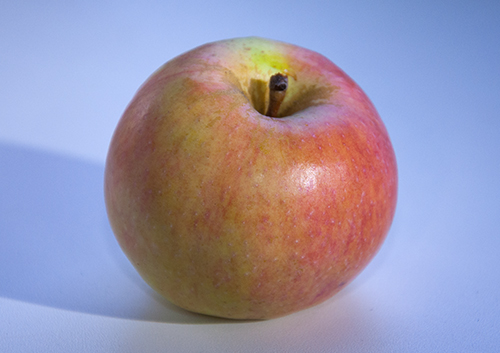
Fruiting mainly on the ringlets. Less often, fruits are formed on last year's increments. Taking into account the type of fruiting and the scarcity of branches, shaping pruning must be carried out carefully.
Shoots of medium thickness are even, rounded in cross section, with a dark brown bark, medium pubescent.
The green leaves are wide and flat. They are generally rounded, less often broadly ovate. The base of the leaf is cordate, the apex is short-pointed. The edges of the wrinkled leaf plate are slightly raised, complexly serrated. The petiole is short, attached to the shoot at an acute angle of 45 degrees. Stipules are small, lanceolate or saber-shaped.
Large flowers in the form of a white saucer. The pistil columns are elongated. The anthers are located lower than the stigmas. Medium flowering variety.
The growing season is 179 days on average. The annual growth of shoots is 41 - 57 cm, depending on climatic conditions.
The apple tree has high winter hardiness. Without damage, the Persian woman tolerates frosts down to minus 40 ° C. This variety withstood even an extreme winter with frosts of minus 53 ° C, while the assessment of wood freezing was only 0.5 points. In the spring of next year, the apple tree showed a high regenerative capacity, as well as good resistance of pistils and flowers to spring frosts.
The variety is drought-resistant. It has a high water-holding capacity of the leaves - 56.7%. Shows high heat resistance of leaves. At 55 ° C, a slight browning was noted in 25% of the leaves.
The main disadvantage of the Persianka apple tree is its instability to scab. In dry summers, leaves and fruits are not affected by scab or are slightly affected. But in the rainy season, the tree is very strongly affected by scab.
The apple tree is fast-growing. The first fruits bear on 5 - 6 years after budding. Productivity is increasing rapidly. 2 years after the beginning of fruiting, the tree brings a full marketable crop.
The variety is highly productive. The average yield under risky farming conditions is 43.7 c / ha or 100 kg per tree, the maximum (isolated cases) - 87.7 c / ha or 200 kg per tree. Bears fruit without periodicity.
Fruits are mostly medium in size, weighing 100 - 120 g. In favorable years, the fruits are enlarged to 150 g. The shape of apples is most often round, less often - wide-cylindrical or oval-high. The ribs are wide, poorly expressed. The appearance of apples is always rated at 5 points.
The surface of the fruit is smooth with a slightly gray waxy coating. The main color when picking fruits is greenish, later it becomes creamy.The skin color is a bright red striped blush that spills over most of the fruit. On the sunny side, the color is more intense.
The fruit stem is short, of medium thickness. The funnel is not very deep, with traces of rusting. The saucer can be narrow or medium with tightly closed sepals. Bulb heart with closed seed chambers. The cup tube is shaped like a narrow cone. There is no axial cavity.
The pulp of the fruit is creamy, coarse-grained, crispy, chipping type, somewhat harsh, juicy. The taste and color of Persianka apples may vary depending on the season. The tasting score in connection with this feature ranges from 3.8 to 4.5 points. In a good year, the fruit has a good sweet and sour taste, reminiscent of the fruit of the Titovka Seedling apple, but the Persian is sweeter. The fruits are very aromatic.
Removable ripeness of fruits mainly occurs in the first ten days of September. Even in the most unfavorable years, the Persianka variety manages to ripen until September 20 - 25. Until that time, apples are firmly held on the tree. Later, with the winds, they crumble, in addition, the untimely removal of the fruits worsens their keeping quality. The apples are ready to be consumed immediately after picking. Fruit keeping quality is good. Stored for 120 - 180 days, depending on conditions. Apples tolerate transportation well. Fruits for universal use.
Depending on the season, the fruit may contain dry soluble substances from 12.9 to 16.8%, sugars from 9.6 to 13.6%, sugar-acid index 13.0, therefore the variety is classified as sugary, which increases its consumer value. Titrated acids from 1.0 to 1.7%, always a high content of ascorbic acid from 17.8 to 20.6 mg / 100 g, catechins (P-active substances) from 195.3 to 279.4 mg per 100 g dry substances, increased content of tannins - 0.13%.
The variety is widely used as an initial form in breeding, since it gives good offspring, resistant to unfavorable climatic conditions, while simultaneously producing high yields. For example, the Pervouralskaya apple tree was obtained from Persian.
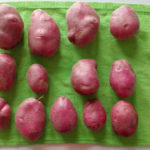
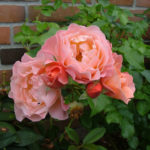
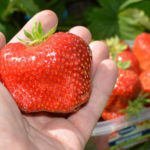
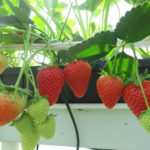
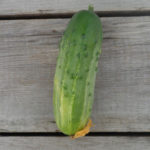
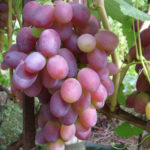



Hello! In Nizhny Tagil, the Persian woman gave a decent harvest already in the third year after planting. They took two years. But, after the winter of 2017−2018, the bark of the apple tree on many branches acquired a pale color and seemed to have thinned out. I don't see any fruit buds, several branches had to be cut out completely, they dried up. More worried about the bark on the branches, pale brown and flaky. Can you tell me what it is?